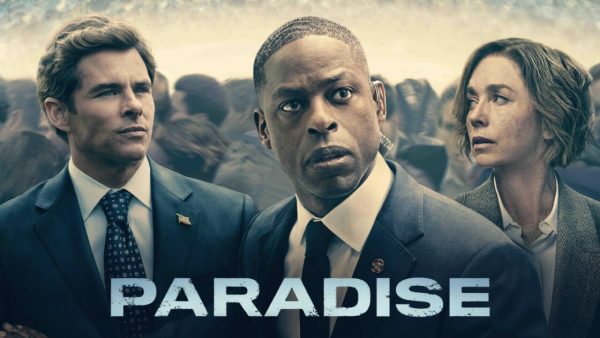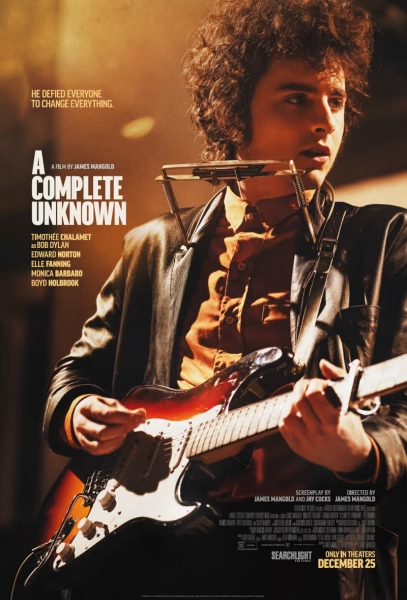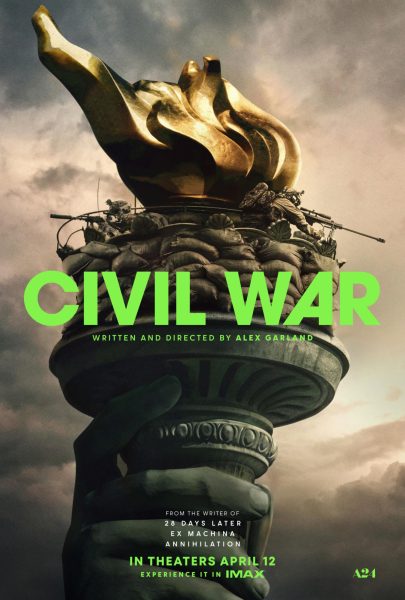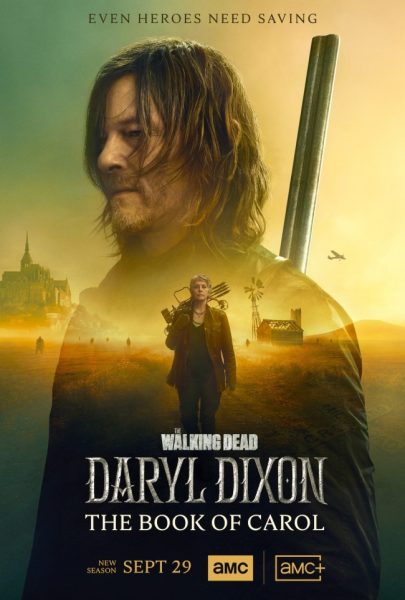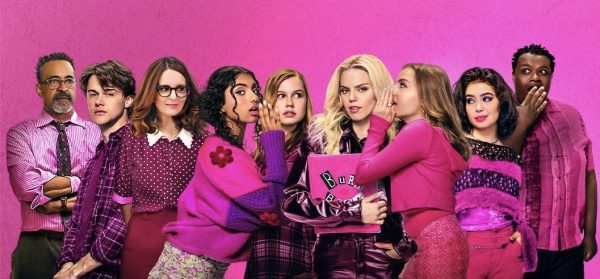Moxie Review: Riot Grrrl or Hollywood Conformity?
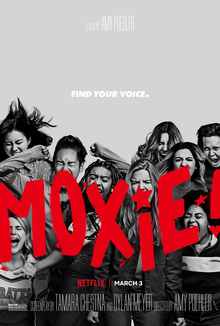
Movie poster for Moxie by Netflix
Released on March 3, 2021 on Netflix, Moxie (2021 dir. Amy Poehler) is based on the book with the same title which follows Vivian as she publishes an anonymous zine. Moxie, the book written by Jennifer Mathieu was many young girls’ introduction to the riot grrrl movement, a feminist movement in response to the lack of women in the punk scene. The movie follows teenage girl Vivian (Hadley Robinson) as she ignites a riot grrrl movement in her sexist school.
The movie starts out with Vivian’s worst nightmare, the first day of school. On their way to class, Claudia (Lauren Tsai) and Vivian discuss “the list” which is where the guys of the school award girls with labels, such as “Most Bangable” and other objectifying, disrespectful titles. The way they discuss it is surprising; they aren’t horrified at it or disgusted with the guys’ audacity. In fact, they seem entertained by it as they guess who will be voted in which category. At best, they are apathetic and dismiss it because they are used to this kind of behavior. This is the attitude many characters have towards the misogynistic behavior they experience. The only one willing to question it is Lucy (Alycia Pascual-Peña), the new girl, who is told to ignore the guy harassing her because he is just being “annoying.” She refuses to accept this and retaliates: “Sometimes, annoying isn’t just annoying.”
It isn’t until the release of the list that Vivian, who is voted “Most Obedient,” is questioning why they accept this treatment and lack of respect. Inspired by her mom’s riot grrrl past and Bikini Kill’s Rebel Girl, she creates a zine to bring together the girls of her school. A zine, short for magazine or fanzine, is independently created, and when it comes to punk zines, usually handmade, booklet or magazine that creates a platform for marginalized voices. In a snowball of actions, including protesting the dress code and sexism in school sports, Claudia takes the fall for the growth of Moxie and Vivian vandalizes the school for an anonymous girl who left a letter in the bathroom. In a very “I am radio rebel” type scene, the girls start claiming the actions they took in the name of Moxie. It has a very feel-good ending with a bonding moment between the girls of the school as they rejoice in their shared fight and the forgiveness of the few characters, Vivian has inadvertently hurt with her actions and (somewhat unjustified) anger.
The movie was pretty accurate to the book. I have to admit, I have not read the book in a while, but from what I remember, most of the plot points were the same with a few differences. One pretty major one in my eyes is the principal. In the book, he is Mitchell’s, the guy who harasses Lucy, dad. He ignores Lucy’s complaints because they are about his son and is shown to enjoy the power he holds over people. However, in the movie, the principal is a woman who gaslights Lucy and the rest of the Moxie girls when they come to her with their problems. There are a few other slightly minor changes such as the role the girls’ soccer team plays, the athletic competition, and the closeness of the Moxie club, but these do not significantly change the main plot or the message of the story.
It is undeniable that Moxie is an entertaining movie. It has interesting characters and does a great job of drawing you in. The plot is fairly easy to follow along, even if it does get compact at points, and it has a conclusive, satisfying ending. However, Moxie wasn’t just marketed as a fun thing to watch in your free time; it’s supposed to be a riot grrrl movie, and on that front, I have a few complaints.
Many critics of Moxie mirror the critics of the riot grrrl movement itself. Why, out of all the diverse characters and their backstories, is the protagonist and founder of Moxie a cishet white girl who is just trying to answer her college essay? Personally, many people, including myself, would prefer to focus on Claudia, whose relationship to feminism and riot grrrl is more complicated due to her status as a first-generation Chinese immigrant. Or Lucy, whose complaints about being harassed are being ignored because her aggressor is captain of the football team. Either one of these girls has more motivation and experience to create a feminist zine than Vivian, who only created it because she was put on a list as “most obedient.”
Moxie has the same problem with many Hollywood stories. They try for diversity by making the side characters black, gay, transgender, etc. but ultimately the story told is about a cishet white girl. Because the focus was on Vivian, many of the diverse characters felt like tokenism. Their stories were hinted at, but none of them were actually told, causing these characters to feel like a weak attempt to fix the lack of inclusivity in the original 90s riot grrrl scene.
Another important this to talk about is the soundtrack. It features a variety of female artists across many different genres, which would be great if Moxie wasn’t a riot grrrl-based movie. Seriously, do the producers know that there are more riot grrrls than just Kathleen Hanna? Most of the (limited) riot grrrl songs in the movie are from her bands. Yes, she is credited as one of the founders of the movement and yes, Vivian is inspired to create Moxie through her song, but how many times can the same song be played before it gets old? I never thought I’d actually say this, but I am sick of hearing Rebel Girl, even if it is covered by The LINDA LINDAS. Overall, the music was a disappointment in terms of riot grrrl representation.
Moxie is a pretty good movie on its own; it’s fun to watch, there’s decent representation, and it has an entertaining plot. However, as a riot grrrl movie, it just doesn’t deliver. My final score is 2.5 stars out of 5: entertaining, but a little disappointing.
